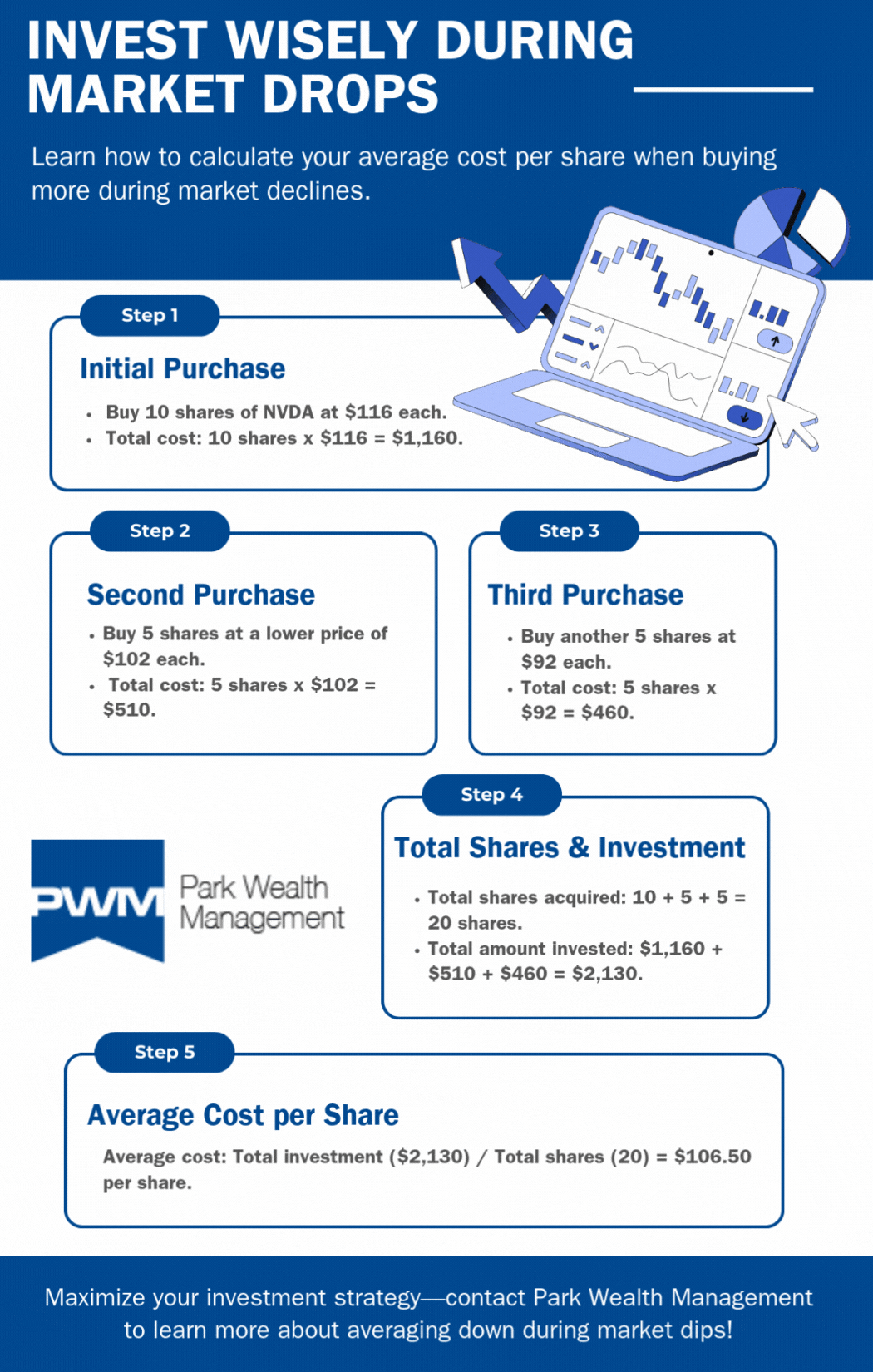Investing in the stock market can feel like a roller coaster ride. As prices fluctuate, feeling anxious over declining account values is common. However, instead of panic selling, consider a more strategic approach: purchasing additional shares during market drops. This can be especially challenging given that markets don't bottom on good news, but instead bottom on bad news. Buying when peak fear has been reached can often produce better returns than waiting until the crisis has passed. This counterintuitive strategy can ultimately yield greater long-term rewards and lower your average cost per share.
Disclosure: Stock investing includes risks, including fluctuating prices and loss of principal.





